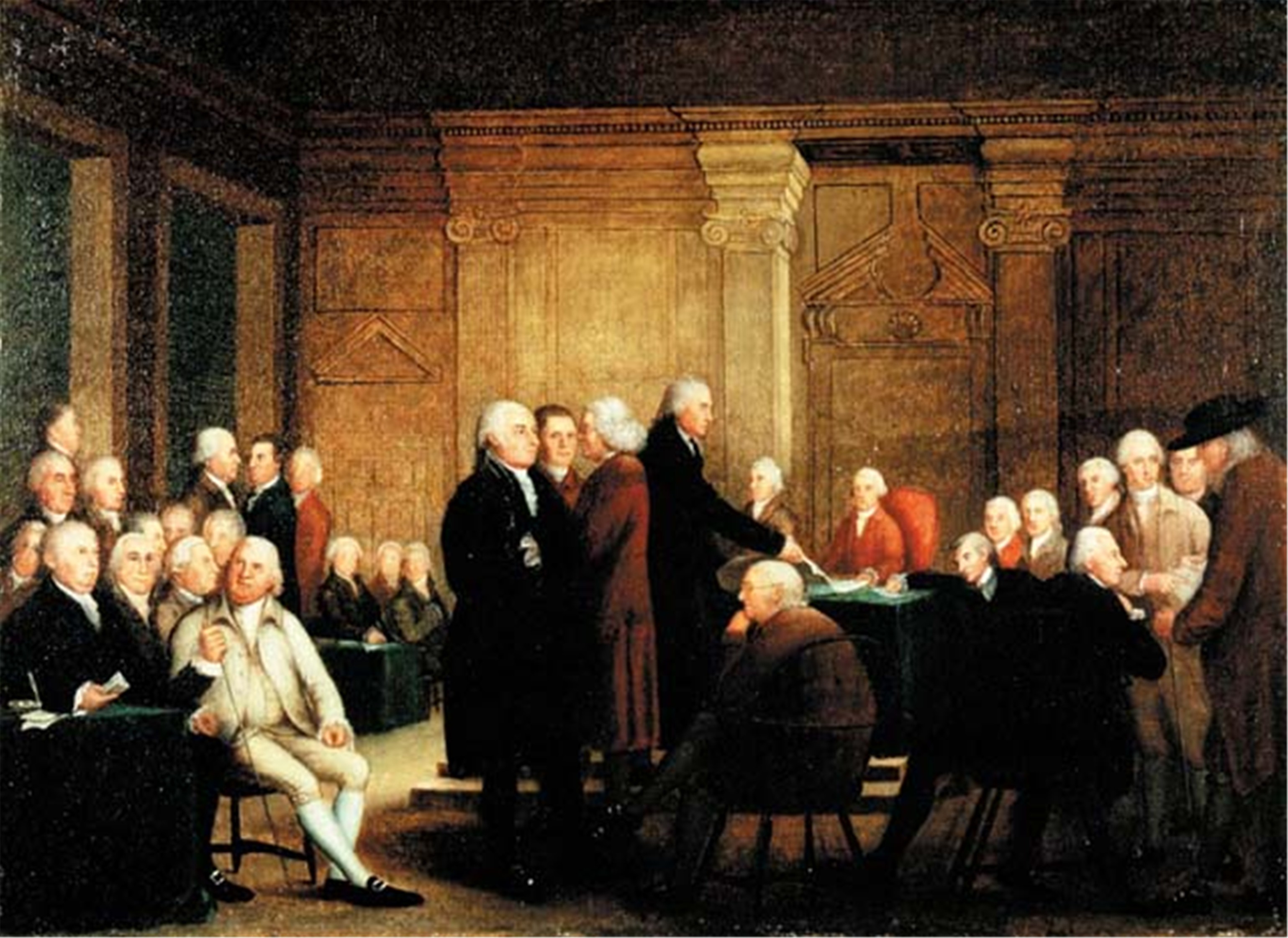
On July 13, 1787, the Continental Congress of the United States passed an important law. This was the "Northwest Ordinance," which declared that the United States intended to settle the region North of the Ohio River and east of the Mississippi. It set up a method by which new states would be admitted to the Union and said that five could be carved from the "Northwest" territory. Pictured below: The Continental Congress in 1787

States of The Great Lakes
The most significant intended purpose of this legislation was its mandate for the creation of new states from the region. It provided that at least three but not more than five states would be established in the territory and that once such a state achieved a population of 60,000 it would be admitted into representation in the Continental Congress on an equal footing with the original thirteen states. The first state created from the Northwest Territory was Ohio, in 1803, at which time the remainder was renamed Indiana Territory. The other four states were Indiana, Illinois, Michigan, and Wisconsin. A portion (about a third) of what later became the state of Minnesota was also part of the territory.
The method of admitting new states set out in the Northwest Ordinance was used, right up to the fiftieth with only a few minor changes. The new states that were added got exactly the same rights and powers as the old. Federal taxes were to be assessed on the new states using the same formula as governed the old states. In other words, the new states were equal to the old. But the Northwest Ordinance did more than concern itself with adding states to the union.
Slavery was forbidden (although fugitive slaves could be tracked and taken back south). The act made a gesture toward protecting the Indians and their land. The Ordinance also established a bill of rights. Up to this time, this had been lacking.

Religious Tolerance
The natural rights provisions of the ordinance foreshadowed the Bill of Rights, the first ten amendments to the U.S. Constitution. Many of the concepts and guarantees of the Ordinance of 1787 were incorporated in the U.S. Constitution and the Bill of Rights. Among those rights was an important promise of religious tolerance: "No person, demeaning [conducting] himself in a peaceable and orderly manner, shall ever be molested [harassed or bothered] on account of his mode of worship or religious sentiments," said the writers. This was in keeping with the widely accepted belief of Americans that men and women were individually responsible for their consciences. To force belief, it was widely thought, would violate Christ's teaching that we must "worship in Spirit and in truth." The right of habeas corpus was written into the charter, as was freedom of religious worship and bans on excessive fines and cruel and unusual punishment. Trial by jury and a ban on ex-post facto laws were also rights recognized.
The Northwest Ordinance showed the importance that Congress attached to religion and religious freedom. Article Three declared, "Religion, morality, and knowledge being necessary to good government and the happiness of mankind, schools and the means of education shall forever be encouraged." In those days, schools were most often run by churches.
Of course, men being what they are, these provisions were sometimes neglected. Indian land was grabbed. Prejudice against Catholics and Mormons sometimes resulted in their unfair treatment. It is doubtful the state governments of these areas have "forever" encouraged religious schools.
But on the whole, this ordinance was wise and is regarded as one of the most worthwhile actions taken by the Continental Congress.



.jpg)